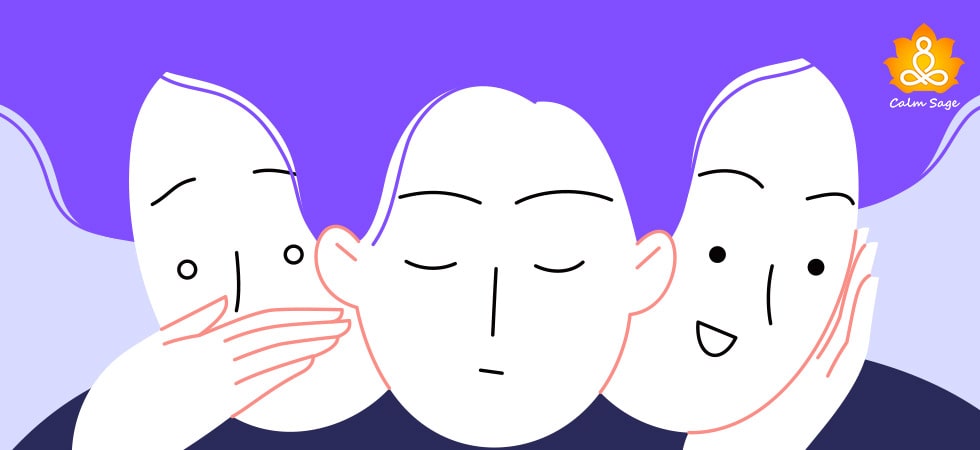All You Need To Know About Quiet Borderline Personality Disorder (BPD)

We all might have heard about borderline personality disorder (BPD) which can be identified by poor self-image, mood swings, and impulsive behavior, but you might not have heard about quiet borderline personality disorder because it is not added as a subtype yet.
Quiet borderline personality disorder comes into the picture when people do not meet the criteria for borderline personality disorder diagnosis. Psychologically, the symptoms are the same, but the only major difference is that the outrage is exploded outward in BPD and outrage is imploded inward during quiet BPD.
In simpler form, one who acts out is experiencing BPD and one who is quiet during an episode is struggling with quiet BPD. Due to this reason, it can also be referred to as high-functioning BPD and it is one of the undiagnosed and misdiagnosed personality disorders.
This blog covers everything we need to know about quiet borderline personality disorder. So, let’s get started!
What is Quiet Borderline Personality Disorder?

Psychologically, you can’t be diagnosed specifically with quiet BPD because it is still not added as a subtype of BPD. According to studies, BPD involves anger outwards and self-destructiveness, meanwhile, people struggling with quiet BPD experience internalized emotional episodes which means they crack the anger inwards. It is also referred to as “high-functioning BPD. However, according to psychologists, this title is considered to be a little bit contradictory. Individuals struggling with quiet BPD are generally able to meet the demands of regular life and in fact, they can keep their symptoms private.
Symptoms of Quiet Borderline Personality Disorder
It’s quite challenging to detect quiet borderline personality disorder as the symptoms are much more similar to typical BPD, the only difference is that outrages are more inward. For example, a person with BOD can be seen involved in self-destructive and angry behaviors, meanwhile, a person with quiet BPD might be seen creating unhealthy boundaries or involved in silent treatment which can be more damaging to their well-being.
Below are some of the common signs and symptoms of quiet borderline personality disorder:
- Avoidance in the form of self-protection
- Being mean to others
- Derealization
- Distorted thinking
- Experiencing uncontrollable emotions (such as shame or guilt)
- Extreme fear of being alone
- Extreme fear of rejection
- Extreme mood swings
- Extreme state of hypervigilance
- Giving silent treatment
- Hopelessness
- Inability to express feelings
- Inability to reflect with people
- Inward aggression, anger, internal criticism, or negative self-talk
- Obsessed with a specific personality
- People-pleasing behavior
- Poor self-image
- Rapid changes in self-image
- Self-isolation
- Self-harm
- Self-sabotaging behavior
- Setting unhealthy boundaries
- Suppressing feelings
- Taking small things personally
Causes of Quiet Borderline Personality Disorder
It shows that the causes of typical BPD are highly influenced by someone’s personality or temperament that manifests this disorder which results in inward or outward symptoms. For example, a child who is abused for talking too much might express silent treatment to show their outrage towards the abuse.
Studies show that the causes of quiet borderline personality disorder are the same as typical borderline personality disorder, such as:
- Family history or genetics
- History of abuse, abandonment, trauma, or neglect
- History of mental health disorders such as bipolar disorder, substance abuse, depression, eating disorder, and others
Differences Between Borderline Personality Disorder and Quiet Borderline Personality Disorder
Here are some of the major differences between typical BPD and quiet BPD:
| Classic BPD | Quiet BPD |
|---|---|
|
|
|
|
|
|
|
|
|
|
Diagnosis and Treatment of Quiet Borderline Personality Disorder

Quiet borderline personality disorder can be diagnosed with the help of the Diagnostic and Statistical Manual of Mental Health Disorders 5th Edition (DSM-5). If you think you or your loved one might be struggling with quiet borderline personality disorder, you must meet five of the below-mentioned criteria:
- Engagement in hysterical efforts
- History of unstable relationships
- History of unstable identity
- Poor self-image
- Risky behavior or problematic impulsivity
- Suicidal ideation or self-harm
- Extreme or uncontrollable emotions
- Hopelessness
- Uncontrollable anger
- Dissociation
Due to hidden symptoms of quiet borderline personality disorder, the disorder often gets misdiagnosed. The lack of classic symptoms results in the wrong diagnosis. In order to receive a correct diagnosis, it’s important, to be honest about your emotions, problems, and history with your psychologist or professional.
After getting a proper diagnosis, it’s important to look at the possible and effective treatment options as well. Though quiet borderline personality disorder appears to be functional in most areas, it’s important to learn not to suppress your emotions and openly communicate your feelings.
Treatment of Quiet BPD
Here are some effective treatment options that can help you with symptoms:
1. Cognitive Behavioral Therapy (CBT)
CBT is a type of talk therapy that helps in removing negative or destructive thoughts with positive behaviors. A psychologist might help you to maintain black-and-white thinking and improve emotional reasoning.
2. Dialectical Behavioral Therapy (DBT)
DBT is a type of CBT and must be objectively used as the major treatment tool for borderline personality disorder. The main goals of DBT are to teach mindfulness, manage emotions, and remove negative thoughts. The goals help in breaking self-destructive patterns. DBT allows you to communicate your feelings without having any fear of being judged or rejected. It is one of the best forms of psychotherapies to learn how to calm yourself.
3. Mentalization Based Therapy (MBT)
MBT refers to a type of psychodynamic therapy that works on your ability to re-think your emotions, thoughts, and needs. This therapy allows you to learn the impacts of whatever you do. The goal is to improve the ability to reflect on experiences. The process involved in MBT helps in getting control over emotions and promotes a sense of self.
4. Schema Therapy
Schema therapy is a combination of different and effective therapeutic approaches that focuses on relationships. This therapy is specially developed for treating personality disorders. It helps in filtering through the viewpoints and patterns.
5. Transference-Focused Therapy (TFP)
TFP is a type of psychodynamic therapy that helps in relating your feelings with your childhood and early relationships. The therapist tries to figure out patterns of communication.
Living Life with Quiet Borderline Personality Disorder
Below are some quick and effective tips to live with quiet borderline personality disorder:
- Share your feelings with someone you trust.
- Reach out to a professional during a crisis.
- Sleep regularly and eat healthily
- Practice mindfulness and acknowledge your feelings
- Unlearn to suppress your emotions
- Take the help of positive affirmations
- Learn self-soothing techniques
Key Takeaway: Quiet BPD and Romantic Relationships
When you continue to live life with a quiet borderline personality disorder, it might get difficult to maintain a positive and healthy relationship with your loved one because it is not necessary that they can understand your episodes to a degree.
However, you can learn healthy coping strategies with the help of couples therapy. With the help of proper diagnosis and treatment, healthy relationships and quiet BPD recovery are possible.
I hope this blog helps you understand everything you wanted to know about Quiet Borderline Personality Disorder. Comment down and share your views on the same.
For more such content, connect with us through all social media platforms.
Thanks for reading!




















